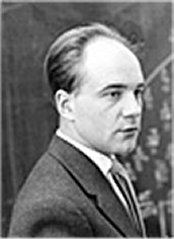Collaboration is one of the key interests I have. Over the years I've slowly found out that when more people are focused on a solution usually a better solution evolves than a single person working alone. My intuitive and introspective tendencies work against me in this area. When I work beyond those tendencies I find the results are far richer and interesting than anything I could have come up with by myself. This article is an example of a String of Connections between design, collaboration and the daily issues that surround us as designers in the Built Environment.
About 10 years ago I began to look at the more difficult problems I was working on and stumbled upon the work of Horst Rittle from the late 1970's and 80's. One of his early works "Dilemmas in a general theory of planning" outlined the initial premise of a complex problem and coined the term "Wicked Problem" and went on to help define the issues around traditional problem solving.
Horst's work began to take effect and today we have a whole series of work done to support his basic theories and suppositions. The terms Hybrid Thinking and Social Messes have been added to the cloud of terms associated with Wicked Problems. In today's world of an ever-increasing sets of stakeholders poised to voice their opinions and critiques, designers of every description and stripe are finding it more and more difficult to keep track of the increasing demands and design requirements.
I can attest to these issues in the area of software design. As the expectation of users grows and the ability of software to respond to many of those demands, the delivered solution isn't just about the function, it is also about how quickly programmers can respond and the perceived ease of use for the targeted users. These sets of variables often result in overlapping solution sets that number in the thousands, and often as the design process continues, users define more and more uses and features that could be possible. The interaction matrix generates a set of impossible design alternatives, all will have unintended consequences generating even more possible outcomes. (Are we mad to think design is even possible?)
But I've seen this also happen in product development, the built environment, social programs and a host of other domains where the desire to deliver spirals out of control into a wicked vortex. GE, Boeing, Ford, Chrysler, Airbus and several other large corporations have begun to awaken to the idea of delivering a continuum of service rather than delivering individual products which are limited by time, space and resources and often miss the mark on meeting customer needs at the right time and place.
So I leave you with the prospect that our built environment might also be thought of as a continuum of service rather than just a collection of roads, pipes, buildings, water works and the like. If thought of as a collection of ever-changing resources to be used to deliver value to their stakeholders we might begin to understand what a truly sustainable environment should be.


No comments:
Post a Comment